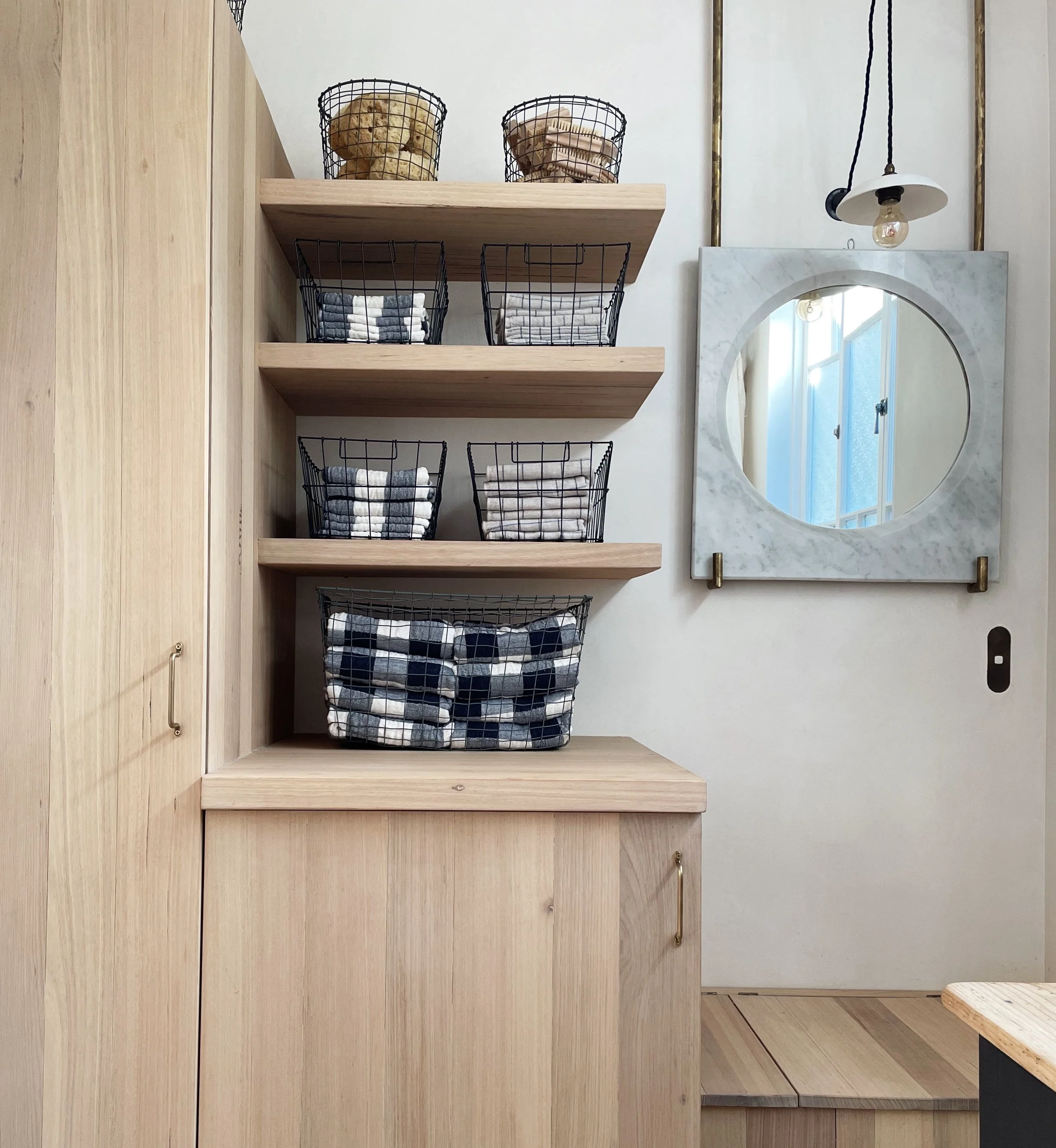Easy ways to renovate sustainably
One part of the design and home renovation process that I’m passionate about is how we can build and source more sustainably. There is a huge amount of waste in the building industry, particularly with home renovation and sustainable alternatives are often considered more expensive and time consuming. This week, I thought I would share some easy ways to renovate sustainably (they might save you money in the long run, too).
Questions to ask when sourcing sustainably —
1. What is the life cycle of the product? i.e where did it come from? where will it end up? can it be recycled or reused?
2. Does it contain chemicals/toxins that produce harmful off-gassing?
3. What is the carbon footprint of the product? Has it been shipped from overseas? Has it been manufactured using fossil fuels?
5 easy ways to renovate sustainably
1. Repurpose rather than demolish
One of the first questions to ask yourself when renovating is what can I repurpose? This means taking inventory of what you have and rather than demolishing what is existing, deconstruct it instead. This could be removing bricks to reuse in another part of your design or to use later in your garden landscaping. Or it could mean carefully removing existing doors and windows and passing these onto a salvage yards so that someone else might use them in the future. This can prevent useable things going to land-fill unnecessarily and even save you money on building materials. Be clear with your builder or trades from the beginning to ensure things aren’t ripped out and disposed of unnecessarily.
2. Source from salvage yards
Sourcing from salvage yards is one of my favourite parts of renovating — you can find some true gems as well as come up with creative solutions you had never thought of. When you get there, chat to the staff and brief them what you're looking for as they can keep an eye out for you. You can source all sorts of things, including sliding doors, sinks, whole kitchens (recently saw a marble kitchen bench top at a local salvage yard), timber beans and cast-iron bathtubs too (you can have these resurfaced later rather than buying a new expensive enamel tub). These unique pieces can really give your home character and warmth, too. Visit regularly but also call ahead to find out what deliveries they are expecting soon.
Sourcing reclaimed doors and windows for the Still Studio.
Resurfaced vintage cast iron bath delivered.
3. Use low VOC paints and finishes
Another way to ensure you have a healthy home long-term is to use low or zero VOC paints and finishes throughout. These are more sustainable as they are created to reduce environmental pollution and will not omit the same toxic off-gassing as traditional paints. For the most natural paint, opt for a lime-based paint. You can also source timber stains and oils that are low VOC too. Suppliers like Painted Earth can help you find the right paint for your project.
4. Source vintage
When it comes to buying furniture for your renovation sourcing vintage is one of the best ways to go. Not only can you find unique, good quality and designer pieces but you can also give older furniture a new life with a bit of love or a coat of paint (instead of them ending up in landfill). If you are looking for something in particular, start by setting up alerts for key words on FB Marketplace and Gumtree — you’d be surprised what you might find. You can also source some beautiful pieces on Etsy, it’s particularly good for vintage lighting. Other go-to’s are Curated Spaces which list a batch of vintage designer pieces each week (you can also list with them) and Lunatiques in Sydney (they post a round up of what’s in-store on their Instagram almost daily).
Vintage marble bathroom mirror sourced from Curated Spaces.
5. Use hemp materials for your upholstery
When sourcing for upholstery, many people don’t consider the environmental impact of the fabric industry. This industry is rapidly depleting non-renewable resources and using huge amounts of energy, water and chemicals in their processes. In contrast, hemp can actually benefit the land by giving nutrients back to soil when it is dried in the field. It uses half the amount of land as cotton to produce the same amount of fibres, needs much less water to cultivate and is a natural pest repellant so doesn’t require toxic pesticides. It can look great too and helps to create a beautiful natural warmth, particularly when used for curtains or seating. Try sourcing fabrics from places like Hemp Gallery (they also do custom-curtains) and Hemp Wholesale Australia.
Hemp curtains used for the triple bunk bed in the Still Studio.





